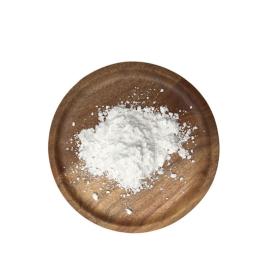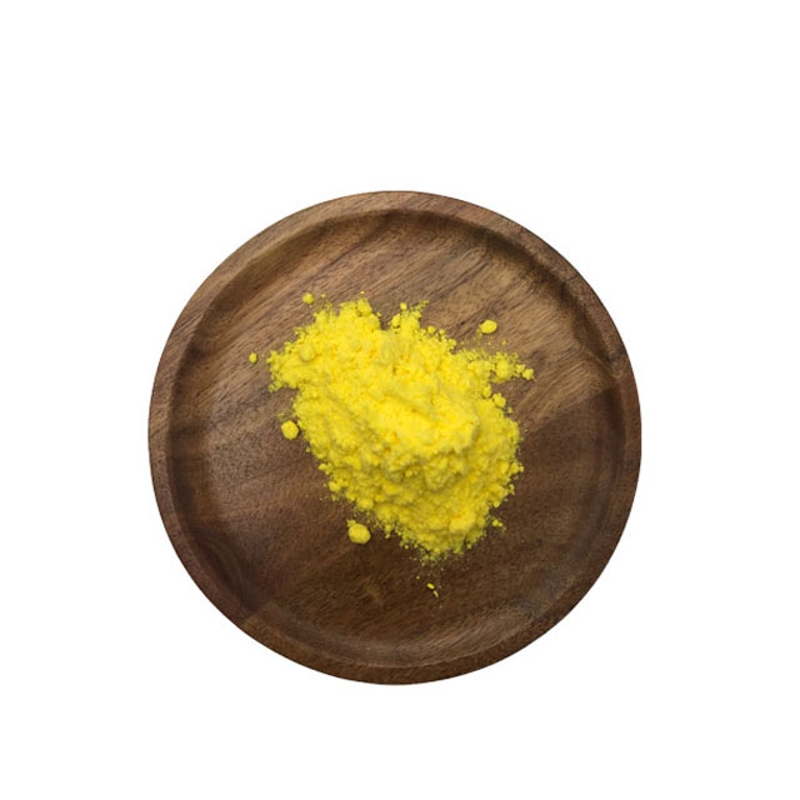-
Categories
-
Pharmaceutical Intermediates
-
Active Pharmaceutical Ingredients
-
Food Additives
- Industrial Coatings
- Agrochemicals
- Dyes and Pigments
- Surfactant
- Flavors and Fragrances
- Chemical Reagents
- Catalyst and Auxiliary
- Natural Products
- Inorganic Chemistry
-
Organic Chemistry
-
Biochemical Engineering
- Analytical Chemistry
- Cosmetic Ingredient
-
Pharmaceutical Intermediates
Promotion
ECHEMI Mall
Wholesale
Weekly Price
Exhibition
News
-
Trade Service
Cartilon sarcoma is the incidence of the incidence after osteosarcoma of the primary bone malignant tumor, accounting for about 20% of all malignant bone tumors, often in the pelvis, femur ends, the near end of the tibia and ribsCartilage sarcoma, which originated in the arch, is very rare, and there has been no literature on the first case of stol cartilage sarcoma reported in 1986Cartilon sarcoma lacks bone structure, produces cartilage matrix, and may appear bone, calcification and mucus-like changes, often due to local lumps, pain or general weaknesscartilage sarcoma generally grows slowly and tends to soak in adjacent areasAt present, the treatment method is mainly surgery, there is no clearconsensus on postoperative assisted treatment at home and abroad
It is reported that 1 case of cartilage sarcoma in young patients originating in the arch, and reviewed the relevant literature to improve the level of diagnosis and treatment of the disease by clinicians1Clinical datapatient, male, 16 years old, was admitted to the hospital on July 30, 2014 for "unintentional discovery of the right crotat for more than 20 days"Before admission to the hospital patients have no intention of finding the right part of the body block, no fever, redness, swelling and so onBody check the size of the right part of the lump about 3 cm x 3 cm, hard texture, poor activity, poor boundary, local skin temperature is not high, no tenderness, nervous system body check negativeThe outside hospital CT prompts the right part of the hand side mixed with high density stoveMRI prompts the right ear screen in front of about 3.5 cm x 2.4 cm lump shadow, long T1 long T2 signal, reinforced after uneven reinforcement, with the surrounding tissue boundary clear, seems to have a envelope, the nature to be determined, the lesions are not tired of the intracranial (Figure 1)After perfecting the examination on August 5, 2014, the whole hemp down the right temporal lump excision, the surgery found that the arch, the outer wall of the palate was destroyed by tumor erosion, the bone is white-cut, the tumor surface has a envelope, the rapid freezing biopsy: tumor lesions, cells have a certain heterotype, consider cartilage sarcomaWith the family fully communicate the patient's condition, the lesions expanded excision surgery During the operation, the mumps ducts were exposed, ligated and branched, and gradually bluntly separated from the deep folls around the mumps, removing the mumps deep leaf block The tumor body is located in the archeea, affecting the upper jaw sinus wall bone, retaining the integrity of the right upper jaw sinus mucosa, biting the bone clamp to remove the tibia, the tibia protrusion to its root, about 1.5 cm from the outer edge of the tumor from the whole bone surface removal tumor, remove the remaining bone membrane and suspicious bone, electric knife burning bone surface Residual muscle reset, layered stitching wound The postoperative pathology result was level II of cartilage cartilage sarcoma in the right arm, and tumor metastasis was not seen in the lymph nodes (Figure 2) After surgery, anti-
infection and supportive treatment, recovered well, and was discharged after 2 weeks The patient had full tumor cut during surgery, did not undergo radiation therapy and chemotherapy after surgery, and was followed up regularly at the clinic until November 2018, and no recurrence or metastasis of the tumor was seen in an MRI review (Figure 3) 2 Discussion cartilage sarcoma can be divided into primary and secondary causes according to the cause of formation Combined with the characteristics of tumor cell HE staining, cartilage sarcoma is divided into I, II, III, where i, III is a high-level tumor, I is a low-level tumor, it is difficult to identify cartilage tumor Primary cartilage sarcoma is formed by changes in normal cartilage-forming process, more often in the torso, accounting for about 2/3 of cartilage sarcoma, mostly low-differentiation high-level tumors, with the ability to invade the surrounding normal tissue and can occur distant metastasis; The prognosis of cartilage sarcoma is related to the tumor site, the prognosis of primary cartilage sarcoma located in the spine or pelvis is the worst, and the overall prognosis of cartilage sarcoma located in the face and at the base of the skull is better, but if it is a high-level tumor, the risk of tumor recurrence and metastasis is still at risk CT and MRI are extremely important in identifying the diagnosis and developing diagnosis and plan prior to cartilage sarcoma Cartilage sarcoma on CT can be characterized by bone cortical damage and bone girder reduction, and spot-like calcification MRI was able to identify cartilage and cartilage tumors mostly located at the base of the skull, while magnetic resonance dispersion weighted imaging had greater accuracy in the differential diagnosis of both, and the apparent diffusion coefficient of cartilage sarcoma was significantly higher than that of cartilage tumors MRI has a higher resolution for soft tissue and can also provide a relationship between the tumor and surrounding tissue, facilitating early diagnosis and monitoring of tumor recurrence Surgery is the main means of treating cartilage sarcoma, through the comparison of local excision, root surgery, amputation and non-surgical treatment, it is found that the patients with better differentiation of low-level cartilage sarcoma had the best prognosis, which is significantly better than amputation surgery Poorly differentiated cartilage sarcoma is prone to tumor recurrence and distant metastasis, and are highly insensitive to radiation therapy and chemotherapy, and localized exorcisation surgery, especially high-level cartilage sarcoma and pelvic cartilage sarcoma, is recommended generally believe that the expansion of excision surgery needs to remove more than 1 cm of normal tissue on the edge of the tumor, there are scholars suggested that the postoperative pathology slice contains more than 2 mm of normal tissue can be considered to have achieved the enlarged removal, so when the anatomical structure is limited, the anatomical barrier can be used for tumor block removal, to achieve the pathological enlargement of the removal, to avoid block removal, reduce the possibility of tumor recurrence Goda and others gave 50 Gy radiation doses of cartilage sarcoma before surgery, or 66 to 70 Gy doses of tumors left behind after surgery, and believed that radiation therapy had some effect on improving the control rate of local lesions, especially when the tumor was difficult to achieve when the tumor was enlarged a retrospective study of 863 cartilage sarcoma patients found that high-dose radiation therapy and proton radiation therapy improved patients' five-year survival There is no uniform standard for radiation doses of cartilage sarcoma Chemical drug therapy is rarely used in cartilage sarcoma, and some studies have suggested that in patients with invasive high-level cartilage sarcoma or local rapid recurrence, chemical therapy can be used as an auxiliary treatment, but the effect is not clear Molecular markers play an important role in assessing the prognosis of cartilage sarcoma patients Due to the limited effectiveness of traditional treatment methods, the study of molecular markers related to cartilage sarcoma diagnosis and treatment has gradually increased in recent years Leptin and lipolicosin are associated with the stage of cartilage sarcoma, and the higher expression levels in high-level cartilage sarcoma can promote tumor vascular and lymphatic tube spawning, increasing its malignancy Alpha-methylylcyenzyme A muffins (alpha-methylacyl-CoA racemase, AMACR) and osteomyne inthetatomas can be used for differential diagnosis of low-level cartilage sarcoma and cartilage tumors, AMACR can be seen in most cartilons and a small number of low-level cartilon sarcoma, while osteometry is only expressed in low-level sarcomoma, normal cartilage and cartilage tumors do not express osteoma by inhibiting cartilage regulators or stimulating vascular endothelial growth factors, can promote cartilage angiogenesis, increase the vascular activity of low-level cartilage sarcoma, and help anti-tumor drugs to reach the tumor site In patients with high-level cartilage sarcoma, anti-angiogenesis targeted drug therapy had better tolerance, and patients had a progression-free median survival time of 22.6 months and may have long-term clinical results More than 50% of primary cartilage sarcoma will have isocitrate dehydrogenase (isocitrate dehydrogenase, IDH) mutation, IDH inhibitors may become an effective treatment for cartilage sarcoma, AG-221 is an oral IDH2 inhibitor, is currently in the Phase II clinical trial stage in this case the patient performed tumor enlargement removal to normal bone structure, while removing the surrounding soft tissue and mumps that may have been affected, and the lymph nodes sent to the test did not see tumor cells The pathological results were level II of cartilage sarcoma, which was not assisted by treatment after surgery, and had been followed up regularly for 50 months, and no tumor relapsed As the patient ages, if you need to improve your appearance, you can perform bow and soft tissue reconstruction







